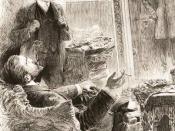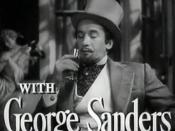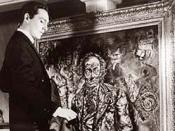Often an author uses a character to represent the ideals of a society through their work of literature. However, in both Joseph Conrad's Heart of Darkness and Oscar Wilde's The Picture of Dorian Gray, the authors also use their characters to represent the corruption within the ideals of both colonialism and Victorian hedonism. In Heart of Darkness, Kurtz is the ideal colonialist; he gives the impression of maintaining honorable intensions while also being "of value" to the Belgian trading company by bringing in the most ivory. Kurtz has the good intentions of colonizing the Congolese natives, but he is ultimately corrupted by power and greed. Dorian Gray, the main character of The Picture of Dorian Gray, is the perfect hedonist; he pursues all of his pleasures, yet he is seemingly unaffected by any consequence. In the public eye, he is a beautiful young man, outwardly happy and satisfied with his life.
Yet, Dorian, like Kurtz, has a rotten soul that has taken all of the consequences of his actions. Both of theses men reflect how a society can appear to have beneficial ideals from the outside, but in reality be corrupted by the seduction of power and greed.
Charles Marlow, the narrator of Heart of Darkness, sets fourth from Belgium with the idea that he is taking part in a colonialist mission to bring culture to the Congolese natives. Yet, as he journeys into the Congo, the "pilgrims" make it clear that they have no intention of colonizing the natives. Instead, Marlow witnesses these "flabby devils" taking advantage of their influence over the natives and plundering the Congo of its resources, namely ivory. As Marlow travels up the Congo River, he learns more about the "exceptional" Kurtz and the realities of colonialism.
"Hadn't I been told in all the...


